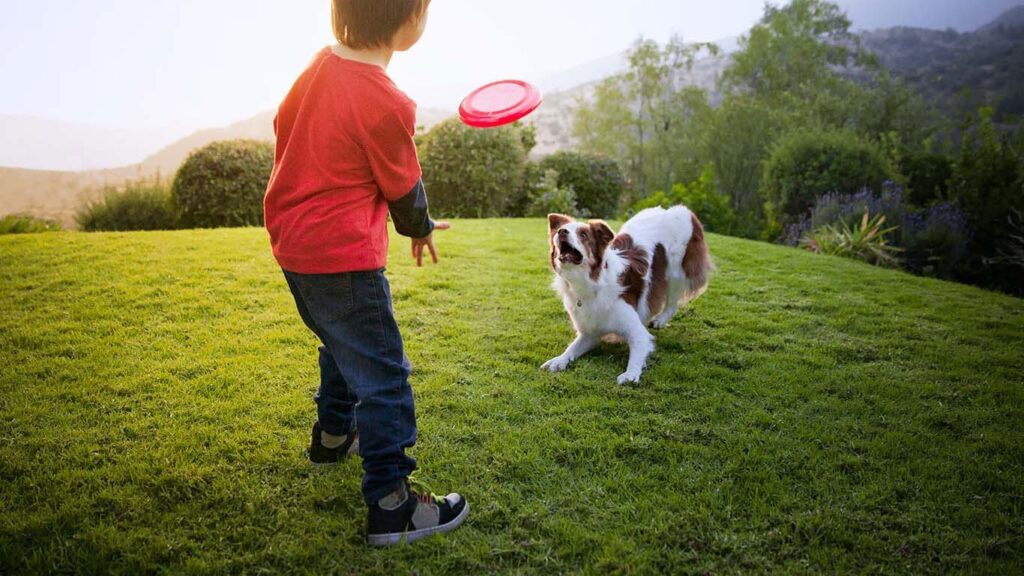
Exercise is a vital component of a dog’s overall care and wellbeing. Much like humans, dogs need regular physical activity to stay healthy, both physically and mentally. Whether you’re the owner of an energetic Border Collie or a laid-back Bulldog, understanding the importance of exercise and tailoring it to your dog’s specific needs is key to ensuring a long, happy, and healthy life.
1. Physical Health Benefits of Exercise
Regular exercise is essential for maintaining your dog’s physical health:
- Weight Management: Obesity is a common issue in dogs and can lead to severe health problems, including diabetes, joint pain, and heart disease. Daily physical activity helps burn calories and maintain a healthy weight.
- Cardiovascular Health: Exercise strengthens your dog’s heart and improves circulation, reducing the risk of heart-related conditions.
- Joint and Bone Health: Physical activity, especially low-impact exercises like walking or swimming, supports joint health, reduces stiffness, and strengthens bones.
- Improved Digestion: Exercise can help regulate your dog’s digestive system, preventing issues like constipation.
2. Mental Health and Stimulation
Exercise isn’t just about physical fitness—it’s also crucial for your dog’s mental health.
- Reduces Anxiety and Stress: Dogs that don’t get enough exercise often show signs of anxiety or stress, such as excessive barking, chewing, or digging. Physical activity helps release pent-up energy, promoting relaxation.
- Prevents Boredom: Regular exercise provides mental stimulation, keeping your dog engaged and preventing destructive behaviors caused by boredom.
- Boosts Happiness: Exercise triggers the release of endorphins, also known as “happy hormones,” improving your dog’s mood and overall well-being.
3. Strengthens the Human-Dog Bond
Exercising with your dog is a wonderful way to strengthen your relationship. Whether you’re walking, playing fetch, or running together, these shared activities build trust and deepen your connection.
4. Types of Exercise for Dogs
Every dog is unique, and their exercise needs depend on factors like breed, age, and health. Here are some common exercise options:
- Walking: A daily walk is a staple for most dogs. It provides physical exercise, mental stimulation from exploring their surroundings, and opportunities for socialization.
- Running: High-energy breeds like Huskies or Labradors benefit greatly from running. Make sure to start slow and build up their endurance.
- Fetch and Play: Games like fetch, tug-of-war, or frisbee are not only fun but also great for engaging your dog’s mind and body.
- Swimming: Swimming is an excellent low-impact exercise, ideal for older dogs or those with joint issues.
- Agility Training: Agility courses are perfect for mentally and physically stimulating active breeds, improving coordination and focus.
5. Exercise Needs by Age and Breed
- Puppies: Puppies are full of energy but have developing joints and bones. Short, frequent play sessions and gentle walks are ideal.
- Adult Dogs: Most adult dogs require 30 minutes to 2 hours of exercise daily, depending on their breed and energy levels.
- Senior Dogs: Older dogs still need exercise to maintain muscle mass and joint health but at a slower pace. Adjust activities to their comfort level.
- Breed Considerations: High-energy breeds like Border Collies or Jack Russell Terriers require more vigorous exercise than low-energy breeds like Bulldogs or Basset Hounds.
6. Socialization Through Exercise
Exercise is an excellent opportunity for dogs to socialize. Visits to dog parks or group activities allow your dog to interact with others, helping them develop good manners and reducing behavioral problems.
7. Signs Your Dog Needs More Exercise
Dogs that aren’t getting enough exercise often exhibit specific signs, such as:
- Excessive barking or whining.
- Chewing or other destructive behaviors.
- Hyperactivity or restlessness.
- Weight gain or lack of muscle tone.
If you notice any of these signs, consider increasing your dog’s activity level.
8. Safety Tips for Exercising Your Dog
- Hydration: Always carry water for your dog, especially during hot weather.
- Avoid Overexertion: Watch for signs of fatigue, such as excessive panting or reluctance to continue.
- Weather Considerations: Avoid exercising during extreme heat or cold. Protect your dog’s paws from hot pavement or icy surfaces.
- Leash Safety: Use a sturdy leash in busy areas to keep your dog safe.
Conclusion
Exercise is an indispensable part of dog care, contributing to their physical health, mental well-being, and overall quality of life. By understanding your dog’s unique exercise needs and incorporating regular activities into your routine, you can ensure they remain happy, healthy, and full of vitality. A well-exercised dog is a joyful and well-behaved companion, making the effort worthwhile for both of you.

